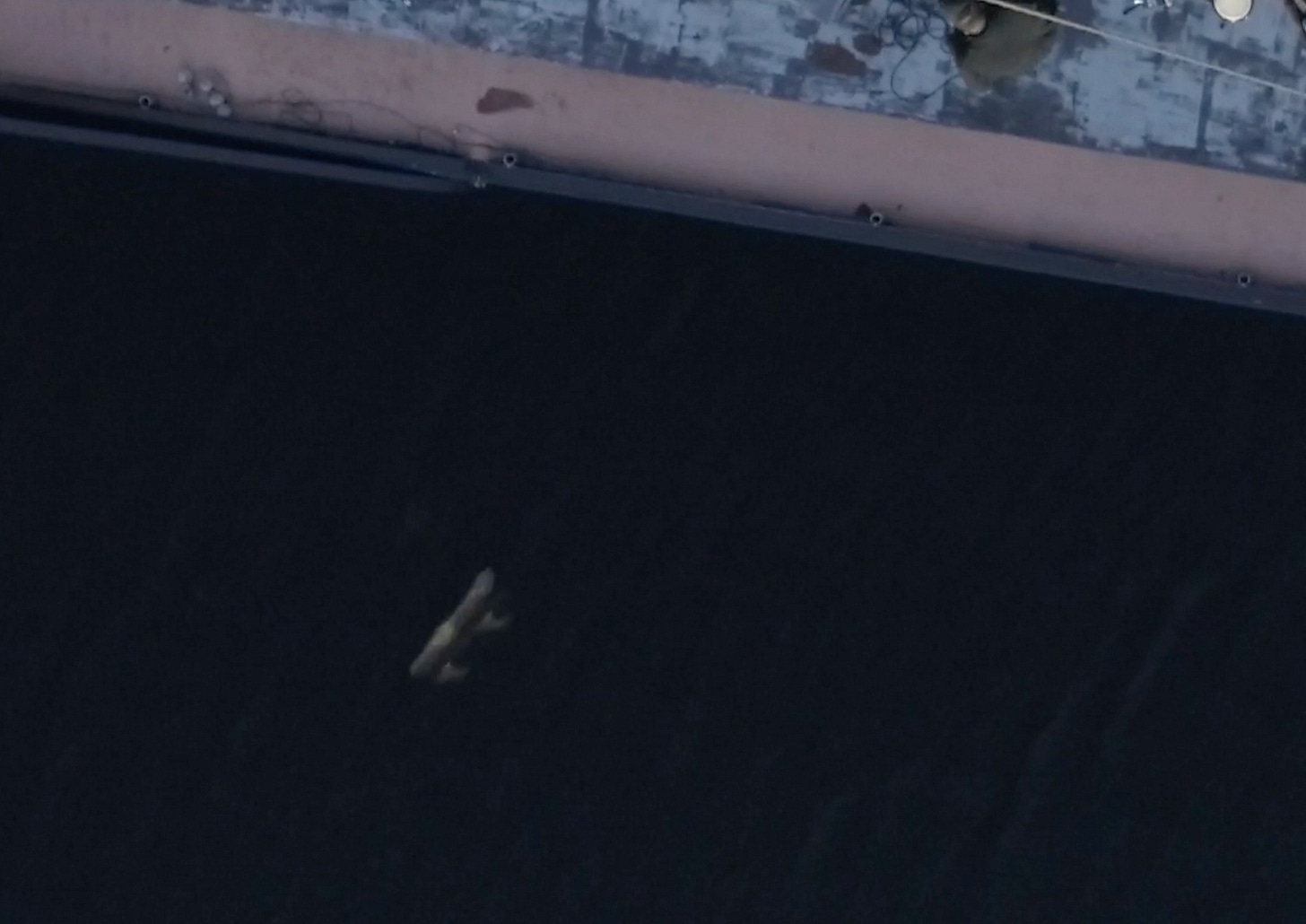Lockdown, Drones and a Blink-of-an-Eye Object (UFO): The Jay Enticknap Case
Written by UAP Files - Jimmy
There’s a peculiar pleasure in being handed a little mystery on a memory card (so to speak). Jay sent me a clip, a short drone video shot over London during lockdown back in June 2020, and I did what anyone in my line of work does: I watched it, then watched it again, then started asking slightly awkward but necessary questions.
Jay Enticknap is a musician and a filmmaker. He’s the sort of person who treats a camera as an extension of curiosity. He’s thoughtful in his analysis, rigorous enough to have already run a few numbers before we ever spoke, and properly relaxed on and off camera. He was a delight to interview: honest, precise, and generous with his time. It’s also worth noting, and I’ll return to this: people on this side of the pond are getting braver about talking about UFOs and UAPs. The stigma is… gently sliding away. That’s one reason the UAP Files and associated UAP Files Podcast exists: to bring the footage, the evidence, and the human side together without the usual theatre.
Let’s look at the case.
On 22 June 2020, Jay was piloting a DJI Phantom 4 Pro during a slow descent, filming a group of musicians recording some promotional videos for an event. He was filming at 50 frames per second (shutter 1/100, around f/5.6). The drone was operating at roughly 60–70 ft above ground: that’s about 18–21 metres.
In the clip an object appears, traverses the frame and is gone. It’s visible for 13 frames. At 50 fps that means it’s in view for 13/50 seconds — roughly 0.26 seconds. That’s the raw timing we need before we even get onto the fun stuff: distance, field of view, pixels and, inevitably, a bit of arithmetic.
The technical baseline (so you can judge my sums)
• Camera: DJI Phantom 4 Pro (fixed 8.8 mm lens; ≈24 mm equivalent).
• Video: 50 fps, shutter 1/100, \~f/5.6.
• Altitude: 60–70 ft (≈18.3–21.3 m).
• Object visible: 13 frames → time visible ≈ 0.26 s.
• No matching images found in reverse image searches of stills.
How we estimate speed (short version)
Because the drone’s camera and altitude are known, we can estimate the ground footprint — the real-world width and height the image covers — using the camera’s field of view. The Phantom 4 Pro lens yields roughly a 73.7° horizontal FOV for 16:9 video. At about 65 ft nadir, that gives a ground footprint of roughly 29.7 m wide × 16.7 m tall. Across our probable altitude range (60–70 ft), that horizontal span is approximately 27.4–32.0 m.
If we’re shooting in 4K (3840 × 2160), that sets a scale in metres per pixel horizontally of roughly:
• 60 ft (≈27.44 m): 27.44 / 3840 ≈ 0.00714 m/px.
• 65 ft (≈29.72 m): 29.72 / 3840 ≈ 0.00774 m/px.
• 70 ft (≈32.04 m): 32.04 / 3840 ≈ 0.00835 m/px.
So, measure the object’s horizontal travel in pixels between its first and last visible frames, multiply by the metres-per-pixel number above to convert that pixel travel to metres, then divide by the visible time (0.26 s). That gives you metres per second, which you can convert to km/h or mph.
The headline numbers (using Jay’s working distance)
Jay’s working distance guess for the object’s straight pass is about 20 m. Using that distance and the 0.26 s visible time gives:
• v = d / t = 20 m / 0.26 s ≈ 76.9 m/s ≈ 277 km/h (≈172 mph).
Because that number is very sensitive to the assumed distance, here’s the immediate sensitivity check (these are the three simple examples from Jay’s own analysis):
• If the distance was 15 m → \~208 km/h (≈129 mph).
• If the distance was 20 m → \~277 km/h (≈172 mph).
• If the distance was 25 m → \~346 km/h (≈215 mph).
Put another way: with a reasonable estimate the object’s first pass is on the order of a few hundred kilometres an hour. That’s far faster than anything benign and wind-blown in a small urban setting, and considerably faster than what you’d expect from a gust of kite-like debris or a slow-moving bird.
Other curious facts…
• There was no audible rotor or engine in Jay’s footage (and no reports from the quay of a “sonic event” or a crash). No-one in the immediate area reported anything hitting the building, landing, or indeed taking off.
• After the initial high-speed pass the object executes a 180° turn and returns along effectively the same path back towards where it came from. That behaviour — a high-speed, tight turn and a repeat pass — does not sit comfortably with anything passive or wind-driven, and even for active craft it’s provocative because the turn is tight and immediate.
• Reverse image searches came up empty. This is not (so far as we can determine) a copy of a known stunt, animal, toy or stock effect.
Where this leaves us?
I don’t want to pretend this clip is a smoking gun for “aliens” or “inter-dimensional craft”. A single video — even an intriguing one — isn’t proof of anything on its own. But the combination of very short exposure time in the frame, the speed estimates (even allowing for error), the manoeuvre on return and the lack of sound or signs of propulsion means we should not shoehorn this into a convenient explanation unless that explanation actually fits all the features.
Jay was careful and curious, and he’s done his preliminary homework that makes this really useful. He was scrupulous in sharing his footage and very generous in walking me through his own thinking. It’s a welcome sign that people in the UK are steadily putting their footage and their stories out in the open. We need more of that: sensible people talking sensibly about strange things.
My conclusion is it’s not a drone. It’s not an insect or bird. It’s not a camera artifact. It’s not a conventional object carried along in the wind.
What does that really leave?
Jay joins me on the UAP Files Podcast to walk through the high-resolution footage, talk through what he captured, and we explain the analysis in detail. If you’re curious about the footage and want to see the frames, movement and the moment-by-moment breakdown — and to hear Jay’s account in his own words — watch the full episode below.





is there any way I could get the full resolution video
Wow exciting! Never seen such a shape in all my years of personal research. Can you discern an estimate of the objects size at all?